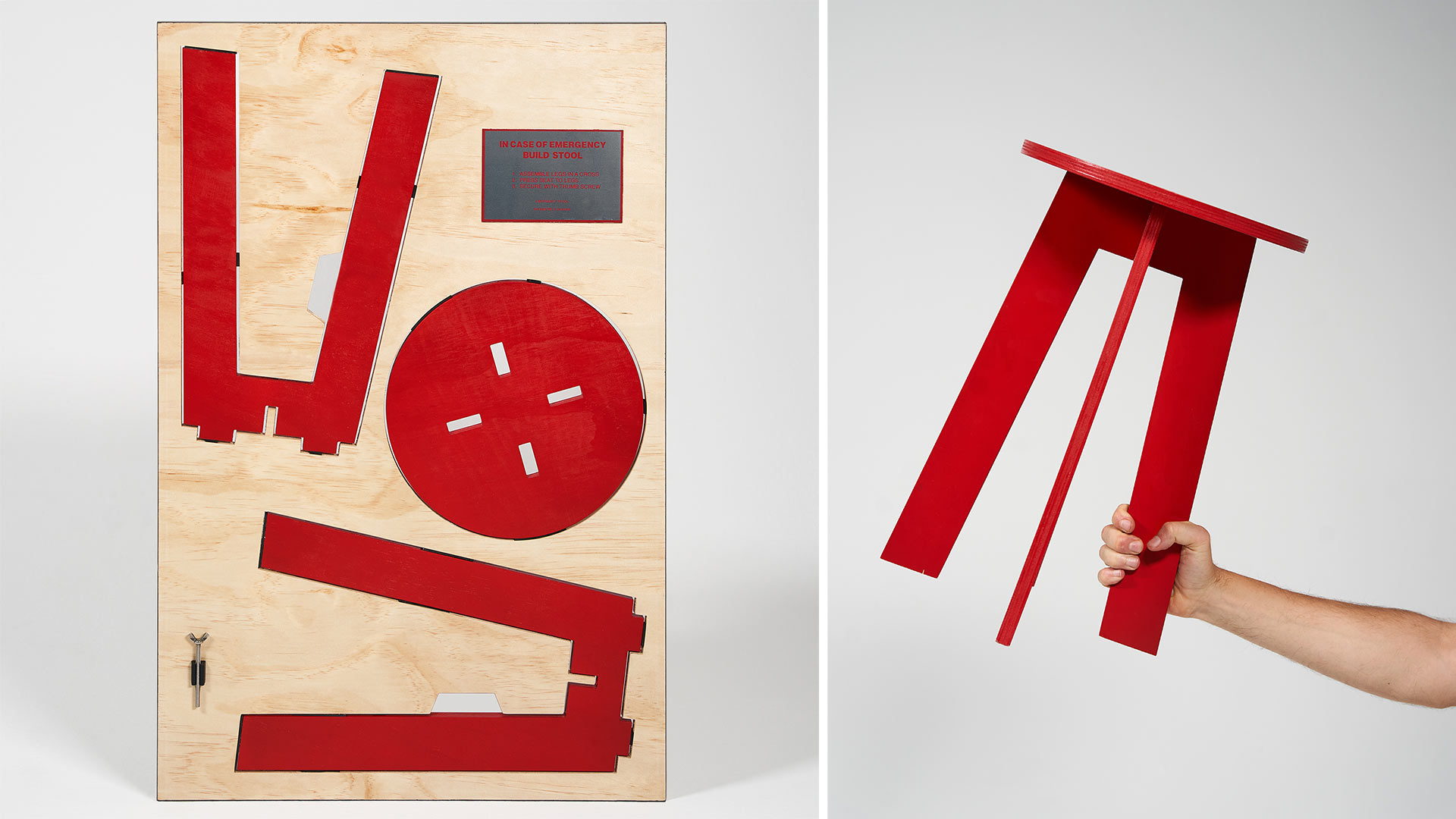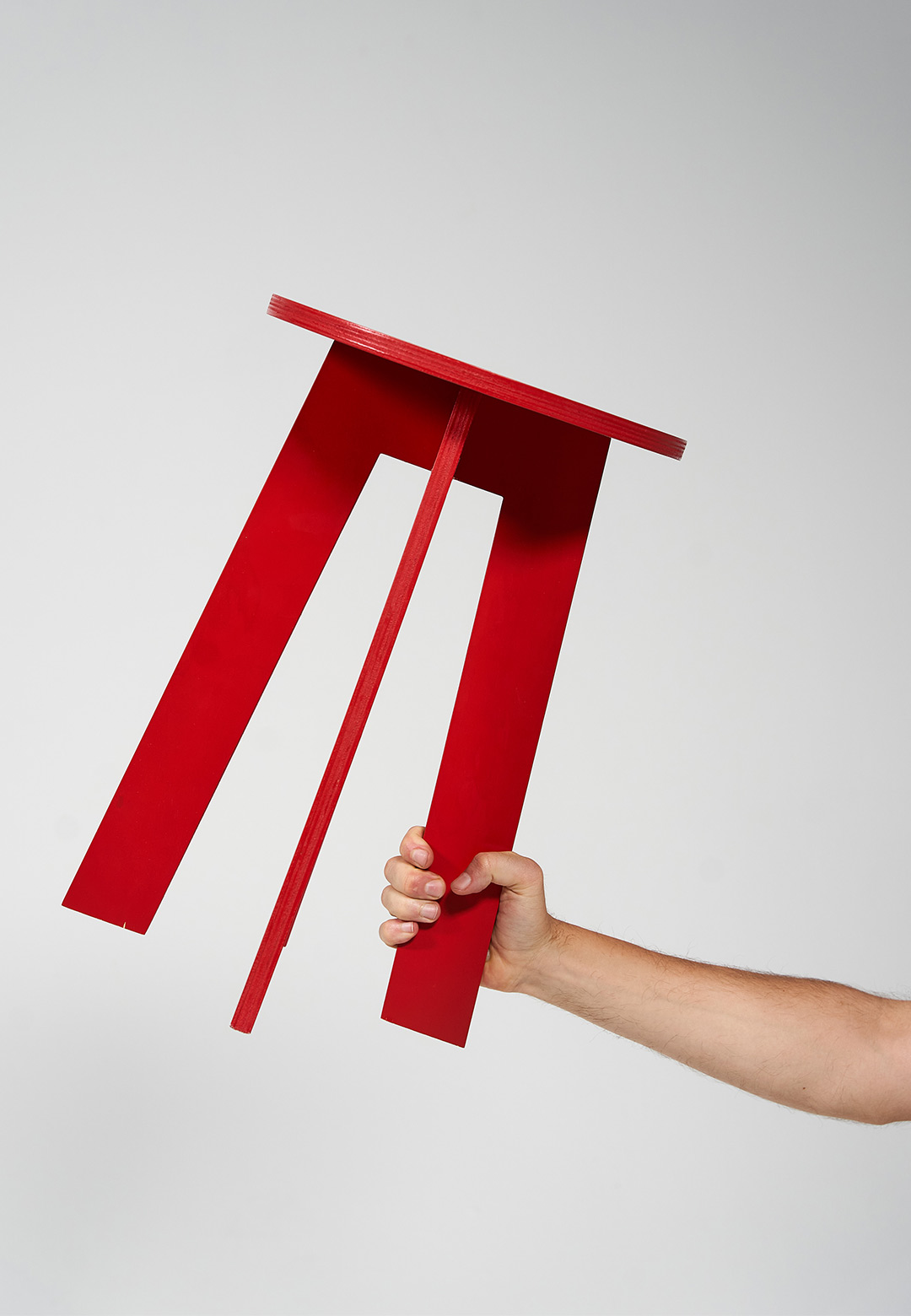Amalgamating the concept of emergency fire extinguishers with furniture design, Nikolas Gregory Bentel, a New York-based artist and designer created 'The Emergency Stool' in collaboration with CANVAS, an art and design partnership firm dedicated to collaborating, consulting, and realising creative work. Built to accommodate surprise additional visitors to your home, workspace, or leisure quarters, the design is in line with Bentel’s goal to ‘release limited edition performative objects’ as part of larger collaborations. With these objects, most of which comprise furniture, clothing, handbags, homeware goods, and toys, Bentel’s eponymous American studio intends to engage viewers and users in a way that not only lets them interact with the designs but also reimagine quotidian objects in anomalous forms and roles.
'The Emergency Stool' is described as “a functional art object” by Bentel. CANVAS, headed by Gustavo Lopez Mendoza and Gene Lee Han, frequently delves into projects where various intersectional references and inspirations come together to guide the process of designing an object or its function. They refer to their process as ‘a practice similar to a collage,’ where many divergent references come together to form a whole.
In October this year, the creators released 100 units of the stool in their first batch. Each piece, which can be easily hung on the wall, is made from a single sheet of the standard 3/4 inches-thick plywood. With pockets for each limb of the stool and a solitary screw required to assemble it, the flat-packed rectangular frame maintains the semblance of an artwork hanging on a wall. The creators of the solid red stool design quiz users by enquiring, “Can we elevate something conventional and celebrate something new?”
CANVAS design and Bentel cite the logic behind the design of 'The Emergency Stool' in the limited amount of domestic space available in New York City, USA, where both practices are based. Due to this reason, residents of the American city purchase sleek, minimalist, and compact furniture, in limited numbers. However, this can often pose the issue of running out of seats if unexpected guests turn up, or in cases when one might need chairs and stools to reach a shelf's higher level or create an ad-hoc platform for the placement of books, vases, or other indoor objects.
The 18 inches-tall stool, which can be assembled and disassembled in a span of a few seconds, presents the opportunity of easily storing furniture in a cramped setting without taking up any floor space or disrupting movement, and at a spot that is clearly visible to all. Executing the function ascertained through its name, the stool, which comprises four pieces, can be assembled in an emergency situation with just three quick steps. “The design takes a lot of inspiration from flat-packed furniture, and we wanted to celebrate this style as a form of art,” the furniture designers relay.
Apart from serving as a modular design piece, the flat-packed stool—with measurements similar to typical art posters hung up in indoor spaces—also serves as a piece of artwork that can be conveniently displayed on walls. By using plywood as the main material for both the stool and its frame, the product designers also intend to change its general perception of ‘an unfinished, cheap, and undesirable material.’ Coloured in contrasting hues, the framed piece makes for an aesthetic addition to indoor spaces. It also paves the way for utilitarian product designs that utilise the flat-pack technique, not only as a means of easy transportation but also as an intrinsic feature that manifests in its display.






 Sign in with email
Sign in with email










What do you think?